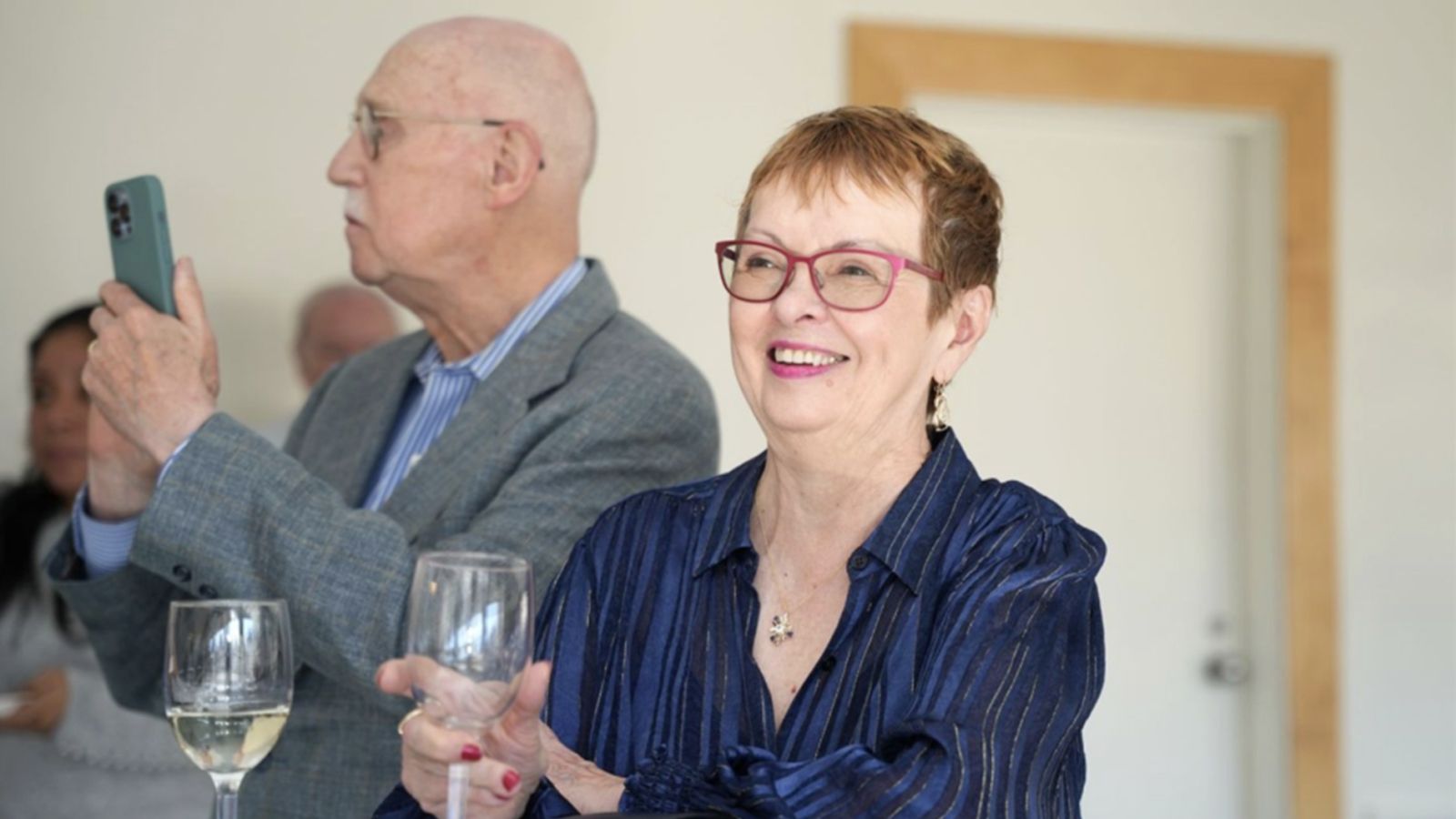As a child in rural Nebraska, Hunter Chemistry Professor Dixie Goss attended a one-room schoolhouse. Goss was a curious child, and Goss’s grandmother, a self-taught woman, stoked young Dixie’s interest in scientific inquiry and the natural world.
“As kids, we would ask questions, such as, how did peanuts grow, and she’d say, well, let’s plant some peanuts and see how they grow,” Goss said. “She always encouraged our curiosity and the idea that you can find out the answers to questions. You don’t have to look them up. You can go figure it out for yourself.”
For which generations of Hunter students, Goss’s colleagues, and the whole world would say, “thank goodness!”
Goss performs basic science, but its implications are anything but basic. Science being a team sport, Goss’s lab at Hunter has contributed important insights to advances that have saved human and plant life.
Her exploration of plant chemistry led to the creation of genetically modified staple crops that resist the deadly barley yellow dwarf virus, which also infects wheat, rice, and oats. Failures of staple crops, of course, can wreck economies and livelihoods and spread hunger in vulnerable parts of the world.
Her research on the interactions of proteins with messenger RNA in human cells counts among the many years of science underlying the development of the Covid-19 vaccine. It also has implications for diseases such as cancer.
Recently, she has been studying how proteins interact with messenger RNA under stressful conditions such as those created by tumors or viruses. Messenger RNA acts as a cell’s gatekeeper for regulating protein production. If you can understand how a tumor or a virus subverts protein production, you can devise strategies for tumor suppressors and anti-viral drugs.
Among other feats, Goss led basic research that enabled production of synthesized antibodies to the Ebola virus in tobacco plants, which were used to treat the first two survivors of the disease. She also discovered a key regulatory step in iron metabolism, opening avenues for therapies for iron-related disorders.
She did it all while mentoring students and maintaining continuous National Science Foundation support for 38 years — possibly the longest-running science grant in CUNY history. She also has received National Institutes of Health funding for her innovative work on how cells react under stress conditions.
“Professor Goss’s efforts have significantly elevated the national profile of Hunter College and exemplify the ideals of scholarly excellence,” Chemistry Department Chair Akira Kawamura wrote in nominating Goss for Hunter’s 2025 Presidential Award for Excellence in Scholarship. “Her career reflects a rare combination of scientific rigor, societal impact, and institutional service.”
Goss went to Nebraska Wesleyan University for her bachelor’s degree, University of Nebraska for her PhD in biophysical chemistry, and did postdoctoral work at Nebraska and University of Georgia. She began her career in university teaching here at Hunter because she wanted an urban environment.
“I didn’t think I’d stay very long. I thought it’d be a great experience, and then I’d move somewhere else,” Goss said. “Of course, I haven’t run out of things to do in New York yet, so I’m still here.”
Goss has collaborated with researchers at Columbia University, Cornell Medical School, and in California and Poland. Living in New York aids collaboration.
“It’s much easier to collaborate when you can get on the subway and pop into the lab and say, ‘Okay, let’s talk about what we’ve got.'”
Not that her career was without bumps.
When she was starting out in the early 1980s, female chemists had difficulty getting hired at universities and often did not receive invitations to speak in important slots at academic conferences.
“One job interview I had, none of the faculty seemed to be available to meet with me, which was strange for a ‘faculty interview.’ I met instead with graduate students,” Goss said. “Clearly, they were checking the box that ‘We have to interview some women.’ And particularly early on, at conferences, women were rarely invited to speak or give the important talks.”
Now, 40 years later, as Goss retires from Hunter, the situation for women in the field has improved, after Goss and her colleagues of both sexes fought against some strong pushback. Goss has trained two generations of students, many of them women, who have gone on to careers in chemistry and biomedicine.
Goss said that she enjoyed working with Hunter’s talented students. Over the years, she has had more than a dozen postdocs, 36 graduate students, more than 100 undergraduates, and several high school students in the lab. The students carry out the research and often contribute ideas in a collaborative process.
“In group meetings, everyone would get together, and someone would present a part of the project they were working on, and everybody would start offering ideas and suggestions and interpretations,” she said. “We would just have a fun time hashing out what we thought was going on and how we should move forward.”
Goss feels satisfied with the results.
“Throughout my career, I’ve always tried to find a really important problem that not everyone is looking at,” she said. “I don’t have the resources of some labs, and so I want to make my own contribution, not necessarily compete with everybody else and try and be ahead of them.”


